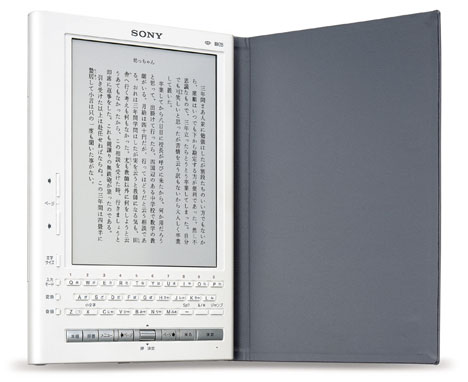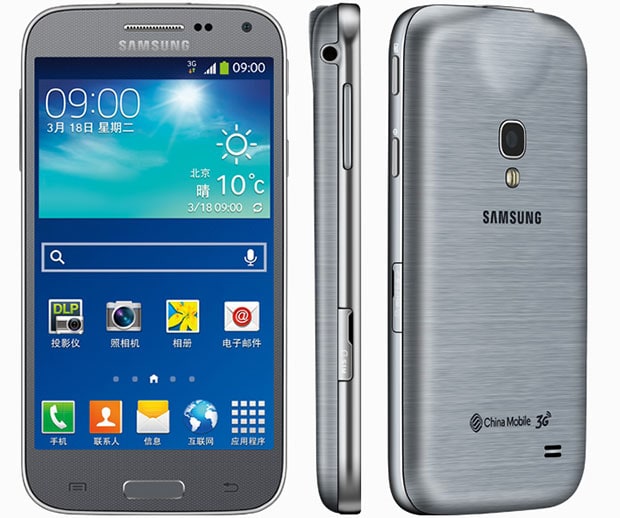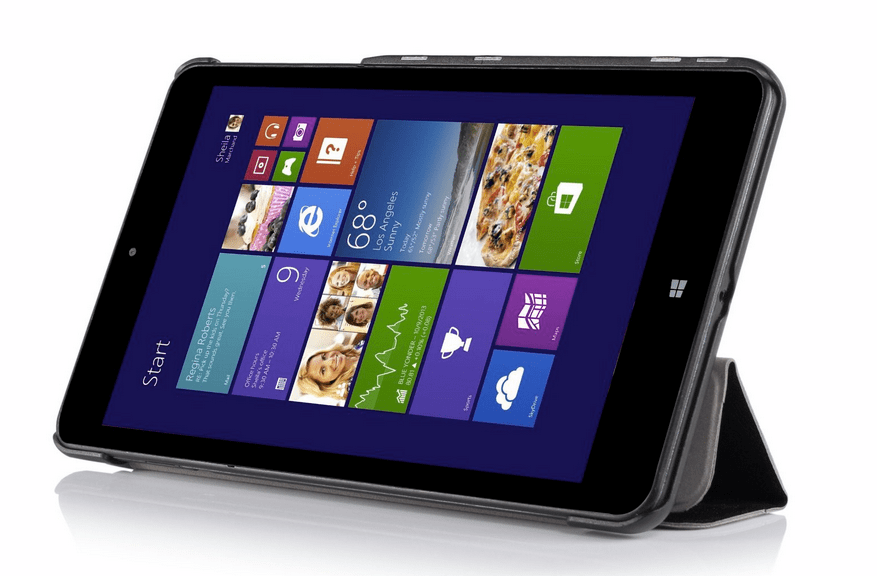The Digital Reader |
- The Morning Coffee – 25 April 2014
- Kobo Lays Off 63 People
- Ten Years Ago This Week, the Sony Librie Ships in Japan
- Amazon Now Testing Their Own Delivery Service
- Opera Brings Their Coast Web Browser to the iPhone
- Tor/Forge Books Announced Plans to go DRM-Free 2 Years Ago Today
- Oyster Signs New Publishers, But is Still Limited to iPhone, iPad
- Samsung Launches a Projector-Equipped Smartphone in China
- Opera for Android Updated
- Leaked (?) Product Listings Hints at 8″ Surface Mini
| The Morning Coffee – 25 April 2014 Posted: 24 Apr 2014 09:30 PM PDT Here’s a short list of stories to read this morning (be sure you read the last one).
The post The Morning Coffee – 25 April 2014 appeared first on The Digital Reader. |
| Posted: 24 Apr 2014 05:14 PM PDT Kobo’s Kobo has reportedly laid off 63 people since Aiki took over. Given Aiki’sreputation as a turn-around specialist, this is likely one step in his plan to make Kobo profitable. According to Kobo’s statement, “By ensuring the Kobo team is lean and agile, we will be able to strengthen our business position and continue our trajectory of global growth,” said René d'Entremont, a Kobo public relations manager. “While these decisions are never easy, we believe that we have the structure that puts us in the best position possible to aggressively compete in an ever-challenging global marketplace.” Initially launched in 2009 as Shortcovers, Kobo is the leading ebook retailer in Canada and one of the leading ebookstores in France, South Africa, and Australia. The company was acquired in late 2012 by Rakuten, a global retailer with $5 billion a year in revenue. "As part of this change, teams have been restructured and optimized; redeploying employees to best use their skills to support the company's core goal of providing the best global eReading experience. All our offices will continue to operate as usual, with a mandate to grow the business in each of our territories." Kobo currently employs more than 400 people worldwide.
The post Kobo Lays Off 63 People appeared first on The Digital Reader. |
| Ten Years Ago This Week, the Sony Librie Ships in Japan Posted: 24 Apr 2014 01:43 PM PDT The The Sony Librie was certainly not the most successful ereader, but it paved the way for all that came after. Its influence can be seen in everything from the keyboard on the original Kindle to the 6″ screen found on most ebook readers today. Weighing in at 10.6 ounces, the Librie sported the first commercially available 6″ E-ink screen, with the now standard 800 x 600 resolution. It had a keyboard, page turn buttons, a paltry 10MB internal storage, and a card slot for a Sony Memory Stick. It was powered by 4 AAA batteries, and read Sony’s proprietary BBeB ebook format (later used on the Sony Readers). Retail was a not too unreasonable 41,790 yen (about $410). While that is damned steep by today’s standards, computers and other electronics cost 3 and 4 times as much back then as they do now. The Librie never amounted to much, and this was probably due to the lack of available content and the DRM. This ereader was tied to an ebookstore where the ebooks were rented and not sold, and they expired in 60 days. (The lack of tools to make your own ebooks probably didn’t help either.) But in spite of the Librie’s lack of success, it still influenced all the ereaders that came after it. It used a 6″ screen which was developed by E-ink, Sony, and Phillips (and manufactured by Toppan). I was told by a contact at Toppan that this screen geometry was chosen because it closely resembled the dimensions of a standard size for paperback books in Japan. Sony funded the development just so it could be used as an ebook reader, and it is not unreasonable to say that without Sony’s funding this particular screen geometry might never have existed.
Jeff Bezos is famous for saying that Amazon will only get into a market when they know that they can outperform the existing players. I would not be surprised if the original spark of the idea of a Kindle with an E-ink screen was ignited when someone at Amazon looked at the Librie and said “we can do better”. Sure, it has been widely reported that Bezos influenced the design of the original Kindle so it looked more like his Blackberry, but the original idea of having a 6″ E-ink screen and a keyboard? That was probably influenced by the Librie. Don’t get me wrong, I think Amazon would have used ebooks to disrupt the book industry at some point, but I also think that without the Librie Amazon might have taken a very different path.
If the Librie hadn’t existed, Amazon could well have decided to give the first Kindle an LCD screen. Battery life would have been terrible, but if the alternate Kindle still managed to keep all of the features then I for one would not have cared. So folks, if you like the screen on your ereader, and if you like the weeks or months of battery life, and if you like the option of comfortably reading outside, then tonight I would raise a glass to the Sony Librie. P.S. In case you’re interested, I missed the anniversary of the press coverage by 3 days. The post Ten Years Ago This Week, the Sony Librie Ships in Japan appeared first on The Digital Reader. |
| Amazon Now Testing Their Own Delivery Service Posted: 24 Apr 2014 11:58 AM PDT Here’s a The WSJ is reporting today that Amazon is testing their own delivery service in California:
There’s no solid info on just how long Amazon has been running this test, but if I had to guess I would bet that Amazon’s been building towards this moment for at least 7 years. I first saw a courier drop off and pick up an Amazon order back in 2007, and I have had couriers deliver packages once or twice since then. But Amazon’s current efforts are a lot larger than simply hiring couriers. Amazon is not just running a pilot; they’re also reportedly looking for space to rent/buy where they can put a truck maintenance facility to replace their more current ad hoc efforts. At their pilot facility near Candlestick Park, tractor trailers carrying a load of packages from Amazon’s distribution center pull up between pairs of Amazon Fresh trucks and Ryder trucks so packages can be transferred: A permanent facility would allow packages to be transferred faster and from a single incoming trailer to a larger number of local vans. And not only is Amazon looking to build or buy a facility, they are also hiring new managers for a service called “Last Mile”:
But even that comes as no surprise. Amazon showed their interest in owning their own delivery service when they bought a stake in Yodl, the UK delivery service, last month. As I said at the time:
The post Amazon Now Testing Their Own Delivery Service appeared first on The Digital Reader. |
| Opera Brings Their Coast Web Browser to the iPhone Posted: 24 Apr 2014 10:55 AM PDT Opera Opera shocked pretty much everyone when they launched Coast in September 2013. This app re-envisioned the web browser with a greater focus on touch and fewer of the legacy design elements that many tablet web browsers inherited from their PC-based ancestors. Coast did away with many elements like the address and menu bars, refresh and other buttons, all with the goal of offering a better browsing experience. And now iPhone owners will be able to join iPad users in enjoying a user experience that feels native to the mobile platform. In related news, iPad users also got some attention today; Opera is rolling out a new update for the iPad app which adds a number of improvements, including a better search function, a “Stuff we like” suggestion function, better password management, and general performance improvements. Opera has also tweaked the interface to offer a wider selection of wallpaper, more icon options, and new gestures to access various menus. You can find the app in iTunes.
The post Opera Brings Their Coast Web Browser to the iPhone appeared first on The Digital Reader. |
| Tor/Forge Books Announced Plans to go DRM-Free 2 Years Ago Today Posted: 24 Apr 2014 09:33 AM PDT
In July 2012 Tor announced that they had followed through on their plans (but later had to backtrack after I reported that they had jumped the gun). A few weeks later, Tor UK followed suit. It’s now two years later, and few publishers have followed in the footsteps of Baen Books, Tor/Forge, or the other handful of US publishers who have dropped DRM or simply never adopted it. Even though Tor UK said in April 2013 “we've seen no discernible increase in piracy on any of our titles” as a result of dropping DRM, many US publishers are still wedded to the idea of treating their customers like pirates. This includes Amazon, which insists on using DRM on audiobooks. Luckily the same cannot be said for other parts of the world. In Europe there are a growing number of publishers who are choosing to use less onerous forms of DRM or go DRM-free. Some of the alternatives include digital watermarks from companies like Booxtream, ePagine, and others. Pottermore, for example, uses digital watermarks for the ebooks they sell. The post Tor/Forge Books Announced Plans to go DRM-Free 2 Years Ago Today appeared first on The Digital Reader. |
| Oyster Signs New Publishers, But is Still Limited to iPhone, iPad Posted: 24 Apr 2014 08:25 AM PDT Oyster’s The two-year-old startup announced on Wednesday that they had signed new deals with Andrews McMeel, Globe Pequot Press, and New Word City, bringing their catalog to over 200,000 titles. Oyster was one of the first startups to launch a subscription ebook service which focused on the general ebook market rather than a niche, but its early start is coming back to haunt the company. Like its larger competitor Scribd, Oyster provides a buffet-style all you can read service. Readers pay $10 a month for access to and the ability to read as many ebooks as they like, including titles from Disney, HarperCollins, HMH, Open Road Media, and more. But unlike Scribd, Oyster is only available in the US and only on the iPad and iPhone. While Oyster does have an Android app planned, there’s news on when it will be released or even if it is under development. Scribd, as you may know, launched its service several weeks after Oyster. Building on its years of experience as a document-sharing site, Scribd offers a $9 buffet-style all you can read service which can be accessed from Android, iOS, and your web browser. The post Oyster Signs New Publishers, But is Still Limited to iPhone, iPad appeared first on The Digital Reader. |
| Samsung Launches a Projector-Equipped Smartphone in China Posted: 24 Apr 2014 07:29 AM PDT
Take the Samsung Beam 2, for example. This smartphone launched in China this week on China Mobile, and it packs in a feature that is rarely seen in smartphone. In addition to generally unremarkable specs, the Beam 2 sports a relatively low resolution projector. This smartphone runs Android 4.2 Jelly Bean on a quad-core 1.2GHz CPU with 1GB RAM, an unknown amount of internal storage, and a microSD card slot. I can find a mention of a single 5MP camera, and in terms of connectivity the Beam 2 supports Wifi, BT, Glonass, and 3G. The Beam 2 also sports a relatively low resolution 4.66″ screen (480 x 800). According to the product listing, this matches the resolution of the projector. In short, Samsung took a budget smartphone and added a cheap projector.
Engadget was not impressed by that phone when they got their hands on it in 2012, but I bet that consumers had a different opinion. Samsung had to have sold enough to make the second model a good investment. The post Samsung Launches a Projector-Equipped Smartphone in China appeared first on The Digital Reader. |
| Posted: 24 Apr 2014 06:37 AM PDT Opera There’s a new version of Opera for Android today. In addition to stability and usability improvements, the update fixes a number of issues like logins and passwords not being properly stored. The new version of the app is also built on a newer version of Chromium (the open source web browser project) than the previous Opera for Android app, and the changelog also mentions tweaks to the Discover menu and other menus. The app is available in Google Play, and with a little bit of digging you can also find the app on the Opera website. Changelog: - Revamped Discover, swipe your way through the latest news - Fix where password manager failed to suggest saved passwords for many sites. - Improved spinner behavior - “Copy link” context menu option on pages and in history view - Chromium version update to 34 - Various stability and usability improvements Over the past 6 months Opera has been turning their web browser expertise to other related niches. In September 2013 they unveiled Coast, an experimental web browser for the iPad (and iPhone). Earlier this year they launched a new ad-supported white label web browsing program that enabled telecoms to show ads in exchange for web access, and they are also beta-testing a streaming data compression service that could prove useful in lowering mobile data usage. The post Opera for Android Updated appeared first on The Digital Reader. |
| Leaked (?) Product Listings Hints at 8″ Surface Mini Posted: 24 Apr 2014 05:41 AM PDT
A whole bunch of new Amazon listings from a 3rd-party case maker have revealed what may be the new Microsoft Surface Mini. The cases, which can be found on Amazon (here), specifically mention that the Surface Mini is an 8″ tablet. The cases come in a variety of styles ranging from a simple tri-fold protective case, a smartcover, and even a case with an detachable Bluetooth keyboard:
So are these listings real? Probably. Ten inch (and larger) tablets are quite a different market from 8″ tablets. Because of their size, 10+ inch tablets are less mobile and are more likely to be left on a desk than say an 8″ or 7″ tablet (some of which can be shoved in a pocket). As I see it, Microsoft is going after an entirely different market, one where Windows 8 tablets are having some success. Clearly Microsoft is hoping that the Surface Mini will prove more successful than the Surface, which due to its high price (the Surface RT costs more than most Windows 8 tablets from HP, Dell, etc) has largely failed to catch on. It’s also worth noting that TechCrunch broke the news with a report about 2 cases, while I am now seeing 8 listings for at least 4 different styles. This is far too elaborate to be a hoax, and the overall design of the Surface Mini looks to be the right scale for an 8″ tablet.     The post Leaked (?) Product Listings Hints at 8″ Surface Mini appeared first on The Digital Reader. |
| You are subscribed to email updates from The Digital Reader To stop receiving these emails, you may unsubscribe now. | Email delivery powered by Google |
| Google Inc., 20 West Kinzie, Chicago IL USA 60610 | |



![kindle_640[1]](http://www.the-digital-reader.com/wp-content/uploads/2014/04/kindle_6401-185x250.jpg)

![BN-CN122_amazon_F_20140424121541[1]](http://www.the-digital-reader.com/wp-content/uploads/2014/04/BN-CN122_amazon_F_201404241215411-150x59.jpg)
![BN-CN122_amazon_F_20140424121541[1]](http://www.the-digital-reader.com/wp-content/uploads/2014/04/BN-CN122_amazon_F_201404241215411-500x197.jpg)
![Tor-Logo[1]](http://www.the-digital-reader.com/wp-content/uploads/2013/04/Tor-Logo1-126x150.jpg)





No comments:
Post a Comment